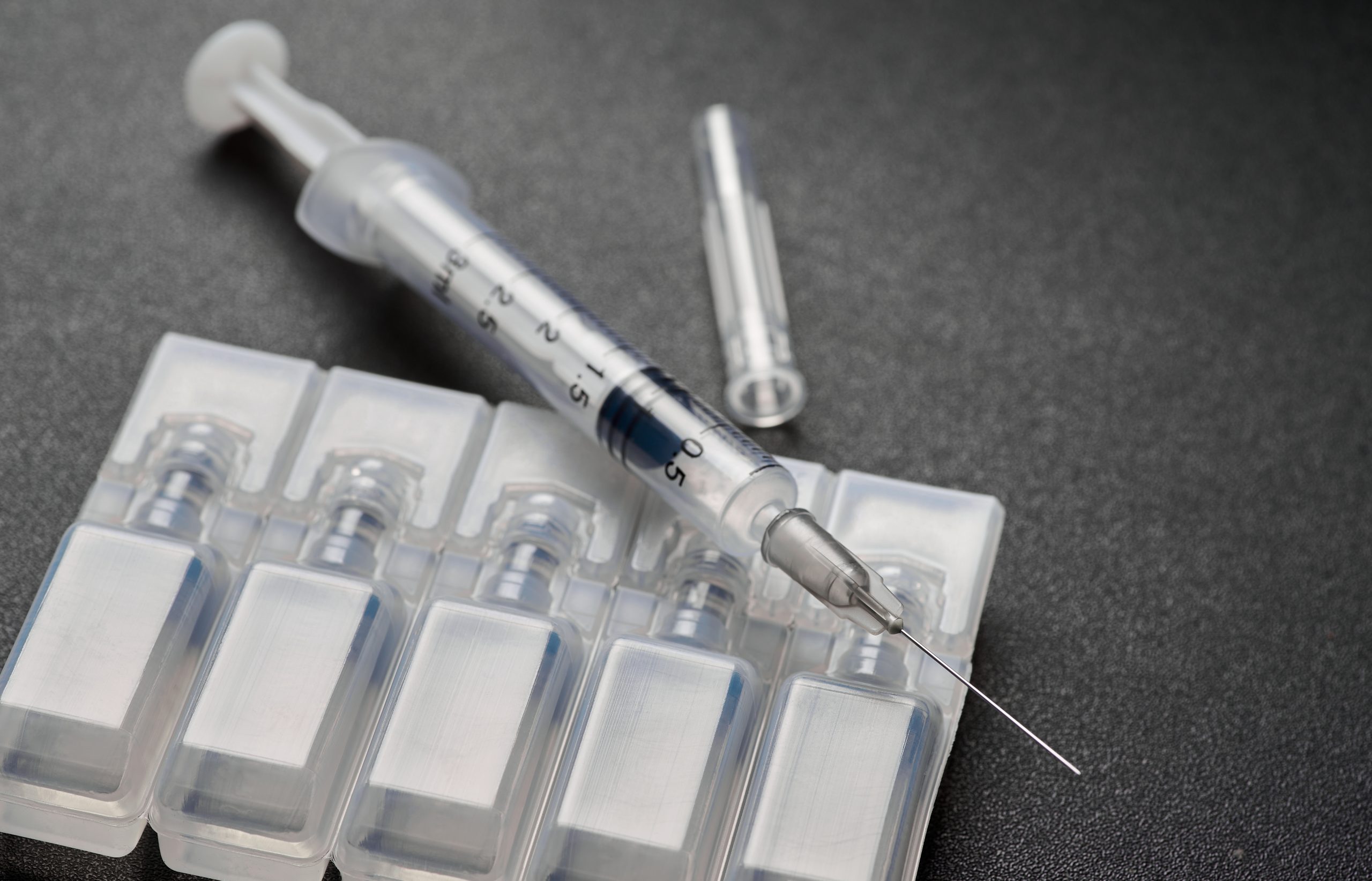According to Brandt et al. (2001), Orthovisc treatment is well-tolerated, offering both statistically and clinically significant alleviation of symptoms. This improvement was particularly noted in patients suffering from mild to moderate knee osteoarthritis, especially when the pain in the opposite knee was relatively modest.
Orthovisc knee injections have proven safe and efficacious in treating knee osteoarthritis (OA) symptoms. This therapy presents a non-surgical alternative for patients seeking relief from symptoms. Although patients can anticipate side effects following Orthovisc treatments, healthcare providers’ assistance can effectively manage these symptoms.
This article will explore the side effects of Orthovisc, potential adverse events, and how to prevent and manage these risks and complications.
Key Takeaways
- Adverse reactions are rare post-treatment effects since Orthovisc knee injections are generally safe for most people.
- Medical professionals must discuss Orthovisc’s side effects with their patients, allowing them to understand the treatment and the potential risks it can bring.
- A thorough consultation with a healthcare provider allows them to evaluate whether patients are a good fit for Orthovisc knee injections.
- Medical professionals monitor patients post-treatment to watch out for patient’s response to the treatment, occurrence of side effects, and treatment outcomes.
About: Medica Depot is your trusted all-in-one supplier, offering a range of high-quality medical injectables and supplies. If you’re looking to buy Orthovisc online, you can do so on Medica Depot quickly and easily. We offer a worry-free experience in searching for the best and most popular products on the market. Whether for health professionals, plastic surgeons, dermatologists, licensed estheticians, or other specialists, we can offer genuine, brand-name products you may need. With Medica Depot, we prioritize serving you better to improve the patient’s quality of life.
Common Adverse Reactions to Orthovisc Knee Injections

Some patients experience adverse reactions after any medical or aesthetic procedure. Adverse reactions are rare post-treatment effects since Orthovisc knee injections are generally safe for most people. However, if patients experience these symptoms after their injection session, it’s essential to immediately contact their healthcare providers for medical attention.
- Arthralgia
- Back Pain
- Headache
- Local injection site adverse events such as pain, discomfort, swelling, inflammation, redness, skin irritation, joint effusion, or fluid build-up
Uncommon but Serious Side Effects of Orthovisc
Orthovisc has proven effective in various clinical trials in treating knee OA pain and other symptoms. Medical professionals must discuss this information with their patients, allowing them to understand the treatment and the potential risks it can bring.
- Infection Risks: Infection symptoms may include persistent warmth, swelling, redness around the knee, high fever, pain at the injection site, bruising, or discoloration.
- Hypersensitivity Reactions and Allergic Responses: Orthovisc may cause hypersensitivity reactions and allergic responses. Symptoms may include hives, breathing difficulty, and swelling of the face, lips, tongue, or throat.
If patients encounter these severe side effects, it’s best to inform their doctor immediately. Seeking medical attention can help manage these side effects and avoid further complications.
Risk Factors and Preventive Measures

Medical professionals know the risk factors and preventive measures for Orthovisc knee injections. Between brand names, such as Orthovisc vs Synvisc, understanding these factors can help patients make informed healthcare decisions for a safe treatment procedure. Healthcare providers must follow Orthovisc’s contraindications as follows:
- Do not administer to patients with known allergies to avian or avian-derived products (including eggs, feathers, or poultry).
- Do not administer to patients with known hypersensitivity to hyaluronate preparations.
- Do not inject Orthovisc in the knees of patients with infections or skin diseases in the area of the injection site or joint.
Pregnant women, breastfeeding women, and children younger than 21 years old have not received approval to use this injection treatment. Moreover, preventive measures can also include proper injection technique and site preparation.
A healthcare provider should inject Orthovisc directly into the knee joint. They may prepare the knee with a local anesthetic to lessen patients’ discomfort. If joint effusion is present, providers must remove it first before the injection.
A thorough consultation with a healthcare provider allows them to evaluate whether patients are a good fit for Orthovisc knee injections. These providers can align the injection’s benefits to the patient’s desired goals, knee osteoarthritis (OA) condition, specific needs, and overall health.
Managing Orthovisc Side Effects in Clinical Practice

Medical professionals monitor patients post-treatment to watch out for patient’s response to the treatment, occurrence of side effects, and treatment outcomes. These professionals should also explain how patients can monitor themselves and quickly seek medical attention if certain conditions persist.
- Immediate Post-Injection Care: After Orthovisc knee injections, patients should avoid strenuous activities or prolonged knee stress for 48 hours. Resting the knee and ice application for several minutes can alleviate mild pain or swelling at the injection site.
- Symptomatic Relief and Follow-up Care: Orthovisc provides symptomatic relief for six months and longer to individuals with milder knee OA pain. Patients must keep track of their injection schedule and ensure they complete their Orthivisc injection course.
- When to Seek Medical Attention for Adverse Reactions: It’s necessary to seek medical help when adverse events occur or side effects persist. Healthcare providers help manage these symptoms, avoiding complications that may compromise the patient’s health.
Conclusion
Orthovisc knee injections can effectively treat knee osteoarthritis (OA) pain. However, patients must understand that side effects and adverse events may occur after this therapy. Recognizing these side effects can help individuals and healthcare providers manage these symptoms and avoid further complications.
Managing side effects in clinical practice involves immediate post-injection care, symptomatic relief, follow-up care, and knowing when to seek medical attention. Understanding and managing these adverse reactions can significantly improve patient outcomes and enhance the effectiveness of Orthovisc treatment.
FAQs
1) What are the adverse events that can occur after Orthovisc injections?
Patients may experience rare adverse events such as arthralgia, back pain, headache, and local injection site adverse events such as pain, discomfort, swelling, inflammation, redness, skin irritation, joint effusion, or fluid build-up.
2) What are the common side effects of Orthovisc knee injections?
Orthovisc side effects are temporary and may subside once the body adapts to the medicine. Common side effects may include local transient pain and swelling at the injection site.
3) What can patients do after an Orthovisc therapy for post-treatment care?
Patients should rest their knees and do activities that can stress the knees at least 48 hours post-injection. Ice application for several minutes can also help with common side effects like pain and swelling at the injection site.
4) How do you manage Orthovisc’s side effects?
Proper post-injection care can help in minimizing the complications. Moreover, if any bothersome symptoms occur, it’s essential for follow-up visits and seek medical attention when necessary.
References
- Brandt, K. D., Block, J. A., Michalski, J. P., Moreland, L. W., Caldwell, J. R., & Lavin, P. T. (2001). Efficacy and safety of intraarticular sodium hyaluronate in knee osteoarthritis. ORTHOVISC Study Group. Clinical orthopaedics and related research, (385), 130–143. https://doi.org/10.1097/00003086-200104000-00021
- Orthovisc Patient Brochure. (n.d.). Johnson & Johnson Medical Devices. https://www.jnjmedtech.com/sites/default/files/user_uploaded_assets/pdf_assets/2020-11/110163-190323%20DSUS%20-%20ORTHOVISC%20Patient%20Brochure_v4%20(3).pdf









